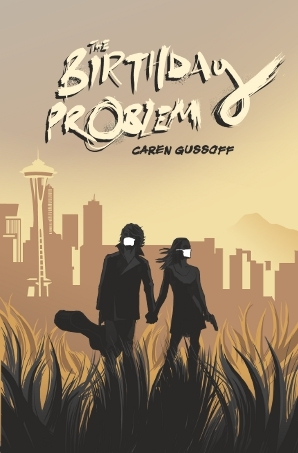The Birthday Problem
Not your everyday nanobot zombie apocalypse tale, The Birthday Problem has character-driven depth.
The Birthday Problem, by Caren Gussoff, is not the typical zombie apocalypse story. This time, the threat to humanity is not an illness but rather a misguided attempt to end human illness for good. The novel keeps the focus on the main characters and their circumstances as the state of the world deteriorates. Those who are not infected are left with the ghosts of those they have lost. Some of them feel they are to blame for the disaster. The book is full of grittiness, but it is also rich in characters and heart. The core of the book is emotional devastation.
Seattle in the year 2060 is infested with what is known as MaGo bots, nanorobots designed to enter people’s bodies and cure whatever is ailing them, whether it is cancer or a simple hangover. Anybody who’s anybody has had these little robots injected into them. The only problem is that the bots have started to attach to people’s brain stems, driving them insane. The consequence of these malfunctioning robots is a world rendered nearly apocalyptic, one where people wear medical masks to protect themselves from the infected air.
Most of the characters in the novel are not only affected by the apocalypse but have either had some hand in creating it, or are related to those who have. Chaaya Gopal Lee, with whom the novel begins, is the great-granddaughter of the original programmer for the nanobots, and she is affected by the severe delirium. Alastair is a blood smuggler for the sake of his father’s liver disease. Rumi, one of the programmers who discovered the malfunction in the nanobots, works tirelessly to correct it until his wife’s the suicide, brought on by delirium. Toussaint, the “King of Seattle,” is a former nanotechnician and rock star who also used to work with the MaGo robots. And Didi, former WNBA center, hopes to reconnect with her wife even as her house slowly fills to the brim with cats. These characters’ struggles are the central focus of the novel.
Different races, sexualities, genders, and ages are represented in a refreshing and interesting way, with these identities presented matter-of-factly and not as central to who the characters are. However, most characters, despite being different ages, act as though they are in their twenties. This is particularly true in the case of Toussaint and his friend Book, a lazy genius, both of whom are approaching forty and still act fairly stunted. Toussaint mournfully strums his guitar, for instance, and expresses naive romantic sentiments.
The novel follows the characters’ stories, their involvement with the virus, and the responsibility they feel for causing it. It’s filled with interesting concepts, such as the exposure of lips becoming a sexy and dangerous taboo due to the virus in the air. The book flows smoothly from one story to the next, introducing a new character in each chapter.
People who like epidemic stories with a character-driven plot will enjoy this novel.
Reviewed by
Sonya Lovy
Disclosure: This article is not an endorsement, but a review. The publisher of this book provided free copies of the book and paid a small fee to have their book reviewed by a professional reviewer. Foreword Reviews and Clarion Reviews make no guarantee that the publisher will receive a positive review. Foreword Magazine, Inc. is disclosing this in accordance with the Federal Trade Commission’s 16 CFR, Part 255.

